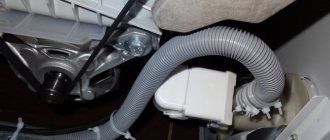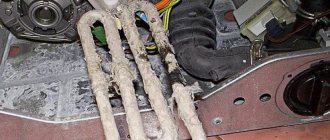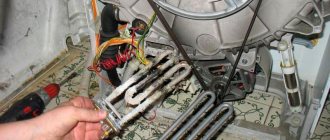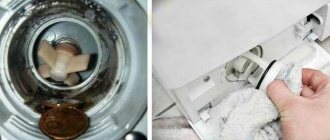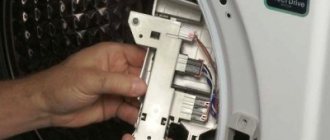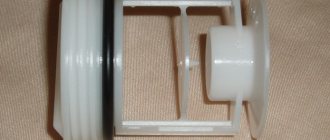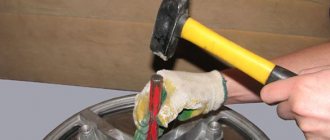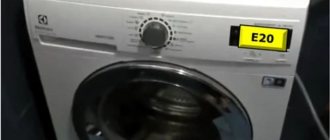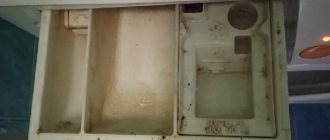Despite the fact that the washing machine is constantly in contact with water, there are parts in it that should not get wet. To a large extent, this applies to drum bearings, which quickly wear out when the lubricant is washed out. The bearing is protected from water penetration by an oil seal - a hermetic seal.
Some users are wondering: do I need to lubricate the washing machine oil seal? Let's figure it out.
Why do you need to lubricate the oil seal in a washing machine?
First, let's look at the structure and operating principle of the oil seal. Not a single washing machine is complete without this part.
This rubber o-ring serves to protect the bearing at the joints from water. For high-quality sealing, the washing machine tank seal must fit as tightly as possible. That is why it is recommended to replace it at the same time as the bearings.
A metal bushing passes through the central axis of the tank, which, when rotated, contributes to wear of the oil seal. To prevent this from happening, it is necessary to use a water-repellent lubricant for the oil seals.
Online diagnostics of a washing machine
If your machine stops washing or rinsing clothes normally, then some kind of malfunction or breakdown has occurred. You can try to find the problem yourself.
Select which operation your washing machine does not perform:
1. Doesn’t drain 2. The drum does not rotate3. Doesn't wring out laundry4. Noisy, knocking, buzzing when spinning5. Doesn't turn on
Checking the operation of the drain pump Is the drain pump of the washing machine working?YesNoI don’t know << Back
Clogged hoses in the washing machine If the sound corresponds to the normal sound that has always been observed when the device is working, the cause is probably a clog.
Was there a blockage in the drain hose?Yes
<< Back
The drain pump does not work! If the sound matches the normal sound of the drain pump, it is recommended that you check the drain filter first.
After cleaning, the drain pump works and the washing machine drains water?YesNo
<< Back
Operation of the drain pump The sound of the pump is usually immediately audible and noticeable. If there is no sound, the pump is not working. We are looking for how to separately enable the water drainage program. As a rule, this is a separate option. After the program has been turned on, the pump should start working in 1-3 seconds. If everything is done correctly and the pump is operational, a buzzing sound will appear. If you hear no buzzing or other sounds when you turn on the program, the pump is probably faulty.
Is the washing machine drain pump working?YesNo
<< Back
Clogged car hoses If you have identified a clog in the hoses, you need to disassemble them, clean them, and then reassemble everything.
Does the washing machine drain well?YesNo
<< Back
Hurray, you did a great job, you fixed it.
<< Return to the beginning of diagnostics
The drain pump is faulty, call a professional.
<< Return to the beginning of the diagnosis.
The washing machine does not rotate the drum. During the operation of the washing machine, such a problem may occur. Each model has a different drum operation. It rotates according to a given algorithm, which is set by the program. This principle applies to spinning and washing. If you are not sure whether the drum is not spinning or whether it is working, put the laundry in the washing machine. Start the spin program. If the machine is running, it will first drain the water and then start spinning. In this case, a rotational process will be observed. If rotation is not visible, then check the belt. First, turn off the program, then unplug the wire from the outlet so that power does not flow into the device. Now you need to remove the back cover. You will need to carefully inspect the drum belt. It is quite easy to determine whether it is in the wrong position or damaged.
Is the washing machine belt torn or stretched?YesNo
<< Back
Broken drum drive belt If the belt breaks, it will be immediately visible. There are also often cases when the belt simply stretches, which is why the drum, accordingly, does not rotate. Do not allow the machine to operate if the belt breaks. It is important to check whether it has wound around the engine pulley or broken the wiring to the engine. The heating element and temperature sensor may also be damaged if the belt does catch the wires. It is imperative to ensure that the belt model is original. If you choose an unsuitable or low-quality product, this will affect the performance of other devices. How do you know what kind of belt you have? There will be a marking written on the old one, compare it with the one indicated on the belt offered to you. You can also find out belt information by car model.
<< Return to the beginning of the diagnosis.
Washing machine motor malfunction If a malfunction is not found, the block with wires must be disconnected from the electric motor. Carefully remove it. We visually evaluate the engine. It may have melting, cracks, or other effects that clearly indicate damage. We call the windings of the tachogenerator and the engine. It is important to understand that you can fully study how correctly the engine operates and whether there is a malfunction only at the stand. If rotation does not occur, there may be a problem with more than just the motor. Sometimes the cause is a malfunctioning electronic module. If a short circuit occurs in the engine, the module could be damaged, while the engine remains operational. Also, the wires could be damaged.
READ MORE: TOP 15 best multicookers: 2021 rating and review of reliable models, as well as expert advice on how to choose a good device for your home
<< Return to the beginning of the diagnosis.
Repairing a washing machine that does not spin clothes After completing the washing process, the washing machine may not spin properly or may not start spinning. Firstly, look, perhaps another mode is set, which does not involve turning on the spin cycle at all. This happens, for example, with programs related to washing woolen items and delicate fabrics. To check, run the spin cycle separately. If the washing machine does not drain water, we proceed to check the pump.
Does the washing machine now spin clothes?YesNo
<< Back
Congratulations, you have solved your problem!
<< Return to the beginning of the diagnosis.
Repair of washing machines, imbalance Modern washing machines place the laundry on the drum before spinning. This is necessary for quality work. Check if this feature works. Sometimes a situation occurs when things get wrapped up in a ball that cannot be unwound automatically within a certain time. At this point the work stops. You need to unwind this laundry yourself, lay it out and continue operating the washing machine. In this case, it is important to turn off the machine, and then, when the laundry is laid out, turn on a separate spin program.
Does the washing machine now spin clothes?YesNo
<< Back
Washing machine repair, drum drive repair Now you need to check the drum drive belt. We remove the cover and visually assess the condition of the belt. There should be no damage. If the tension is weak, the spin may not turn on. If you need to replace the belt, you should only replace it with the original one. After replacing, we try the program again.
Fault found, does the washing machine spin?YesNo
<< Back
The engine or electronic module is faulty, call a repairman to your home.
<< Return to the beginning of the diagnosis.
The washing machine hums, makes noise during the spin cycle, rumbles, and makes a jet plane noise. If the washing machine makes noise during operation, making unusual sounds, it’s time to pay special attention to it. In this case, a visible breakdown or lack of functionality may not be observed, but the appearance of strange sounds indicates that it is time to look for a malfunction. It is important to understand that a new car that has just been delivered should be inspected for shipping bolts. If you forget to remove them, noise and vibration are inevitable. So, let's begin! We turn the washing machine drum and listen to extraneous sounds.
When rotating, is there any extraneous noise, hum, balls rolling, does the drum move unevenly with slight jamming?YesNo
<< Back
If the drum rotates and uncharacteristic sounds appear, including vibration, it’s time to check the bearings. If they malfunction, they will have to be replaced.
<< Return to the beginning of the diagnosis.
The counterweight of the washing machine has come loose. The fastening of the counterweights must also be of high quality. If they are “loose”, it’s time to eliminate this defect. In some cases, you can notice that the bolts that secure the stones are completely missing. In this case, the connectors for mounting will be visible. The bolts need to be found and put in place - they probably simply came loose. A rumble heard while the washing machine is operating may indicate that the bolts have partially loosened. To check the bolts, you can simply push the drum. If it is secure, the bolts are fine. If it moves, there is a defect.
Do you hear any noise, clanging or rattling noises when moving the washing machine tub?YesNo
<< Back
The counterweight has come off
<< Return to the beginning of diagnostics
Checking the shock absorbers of the washing machine Checking the shock absorbers. If you hear vibration or excessive noise during the spin cycle, there may be a problem with the shock absorbers. Sometimes the washer moves. Now let's check the functionality. Remove the top cover. Click on the tank, move it five to seven centimeters down. A normal reaction will be observed if the tank rises sharply, jumping a little and stopping in its normal place. If this does not happen, the shock absorbers need to be replaced.
Are the washing machine shock absorbers working?YesNo
<< Back
If a visible defect has not been identified, check whether a foreign object may have entered the machine. Replacing shock absorbers. The problem with shock absorbers wearing out occurs quite often over time.
<< Return to the beginning of the diagnosis.
Replacing washing machine shock absorbers. Malfunction and wear of shock absorbers is a fairly common phenomenon.
<< Return to the beginning of the diagnosis.
The washing machine does not turn on. It is worth trying to find the cause of the problem yourself and fix it. We start by connecting the device to the network. Next, click on the “network” button. In different car models, different indications are triggered: here either the display will start working, or, on the contrary, some other button.
Does the washing machine have an indication?YesNo
<< Back
Hatch lock lock (UBL) You can check it by turning on any of the programs. We choose what we will use. Click on the corresponding button. Don't forget to pay attention to the inclusion. As a rule, the process of activating a function is characterized by the presence of a certain sound, for example a click, with which the device makes it clear that pressing again is not necessary and the machine is already working. If there is no sound, the button may be broken. In this case, the main thing that must be done is to block the hatch and start working. If this happens, everything is fine.
The washing machine is blocking the hatch, the UBL is triggered?YesNo
<< Back
Water fill valve malfunction
<< Return to the beginning of the diagnosis.
The washing machine hatch does not lock
<< Return to the beginning of the diagnosis.
No indication Checking the electrical circuit. If you notice that the washing machine does not respond to being turned on, it is first recommended to check the power supply. The outlet may be faulty. Try connecting another device. If the outlet works, you need to check whether the circuit that conducts energy through the washing machine from one element to another is intact. To do this, you will need a multimeter, which will help you fully analyze the ability to respond to an electrical signal at several stages of operation. If there is no network connection anywhere, this is probably the problem. We carry out this manipulation until we reach the electronic module. If we are talking about an old washing machine, here it will look like the device’s program. When you turn on the button, there should be no breaks in the circuit. If the circuit works, everything is fine electrically.
READ MORE: 15 best compact dishwashers - 2020 rating (Top 15)
Is the washing machine's power supply OK?YesNo
<< Back
Repair of electronic module (unit)
<< Return to the beginning of diagnostics
Contact circuit fault
<< Return to the beginning of diagnostics
Which oil seal lubricant to choose
Some users use folk remedies such as oil or fat. Of course, this seems more economical, since lubricant that meets all standards is expensive.
Dear users! Do not forget: by saving on lubrication, you reduce the service life of the oil seal. Subsequently, you will have to spend money on new parts and replace them.
Before replacing the oil seal, let's figure out what lubricant to choose.
Properties that a lubricant must have:
- Moisture-repellent.
- Without aggressive chemical components. Otherwise, machine parts will be destroyed under their influence.
- Resistant to temperature changes.
- Viscosity – for long service life.
Experts recommend using silicone water-repellent lubricant for LIQUI MOLY “Silicon-Fett” oil seals. It can withstand temperatures from -40°C to +200°C. It is considered the most effective of all presented.
Other means are also popular. How else you can lubricate the oil seal in a washing machine, read below.
Anderol for washing machines
Italian-made lubricant has a neutral chemical composition and water-repellent properties. Withstands temperatures up to +190°C. Perfectly retains its properties when heated. Suitable for all types of seals.
Ambligon
Amblygon is a lubricant for oil seals from an Italian manufacturer. The product perfectly retains its properties when exposed to temperatures from -28 to +192°C. It has water-repellent properties and is chemically inert. It is packaged both in portions in syringes of 2 ml and in packages of 100 g.
Litol-24
Multi-purpose lubricant is water resistant. Unlike non-professional products, it does not harden when heated. Able to withstand temperatures from -40°C to +120°C. Chemically and mechanically stable.
Litol-24M
The product has a moisture-repellent effect, reliably protecting components from corrosion. Withstands temperatures ranging from -40°C to +120°C. Compatible with other lubricants, does not compact in water, and is mechanically stable.
CIATIM-221
Homogeneous grease with multi-purpose applications.
Replacing the oil seal in a washing machine requires that the lubricant must withstand temperature changes. CIATIM-221 can withstand from -60°C to +150°C. It is successfully used in friction units and does not lose its properties when boiled.
However, there are also disadvantages: the lubricant is hygroscopic, therefore, when it absorbs moisture, it thickens and loses its properties. In addition, it cannot be used together with other means. Chemically inert.
Make your choice and purchase the appropriate lubricant.
Now let's look at how to change the oil seal.
Purpose and properties of substances
Waterproof lubricants are special compounds intended for components and mechanisms operating in conditions of high humidity. They protect against corrosion by forming a reliable water-repellent layer on the surface of parts, and perform a number of other functions.
Insufficiently waterproof mixtures absorb moisture and swell. Oily substances turn into an emulsion under the influence of water. Such phenomena lead to the fact that materials no longer provide the necessary protection for components, oxidation occurs and corrosion forms on treated surfaces.
The water resistance of a mixture is measured by parameters such as solubility, hygroscopicity, washability and change in characteristics upon contact with water. If they are implemented at a sufficient level, the lubricant will effectively perform the following functions:
- suppression of external pollution;
- reduction of friction;
- corrosion protection;
- improved gliding;
- cooling components as temperatures rise;
- uniform distribution of heat generated during friction.
Waterproof compounds are in demand in almost all areas of industry. They are used for processing plain bearings, roller bearings of equipment operating at temperatures up to +200°C, roller guides, chain and worm gears of various mechanisms. Also used for lubricating vehicle components during construction, repair and installation work.
The demand for waterproof lubricants is explained by their versatility and numerous properties:
- moisture resistance and structural stability;
- extending the life of equipment in humid environments;
- no need to re-process parts due to resistance to water washout;
- increasing the mechanical stability of parts in difficult working conditions;
- suppression of scuffing and peeling under high load on equipment;
- protection of bearings from any foreign impurities;
- resistance to changes in technical characteristics during maintenance;
- maintaining the required level of fluidity in aggressive environments.
The use of water and moisture resistant mixtures helps reduce financial costs when servicing various equipment and vehicles.
Today, many waterproof lubricants are produced, but choosing the most suitable composition for a particular type of equipment is not so simple, since such substances have special requirements. In the selection process, it is necessary to take into account all the properties of the mixture that form its individual elements. It is necessary to give preference only to high-quality products with suitable composition and properties.
We make a replacement
Let's figure out how to get to the oil seal. Here are the step by step steps.
- After disconnecting the machine from the network and communications, drain the remaining water from the drain filter. It is located under the front panel, behind a small hatch.
- Remove two screws from the back to remove the top panel. Now unscrew the screws around the perimeter of the back panel and set it aside.
- Remove the drive belt from the drum. Using the hammer handle to lock the pulley, unscrew its central bolt and remove it from the tank.
- Disconnect any wiring that may be attached to the drum. It is usually secured with plastic clamps, so use wire cutters.
- After disconnecting the motor wiring, unscrew the fastening bolts and pull the electric motor out of the housing. Also unfasten the wires from the heating element.
- Remove the tank top counterweight bolts. Put it aside.
- Pull out the detergent dispenser by pressing the central latch. Remove all bolts that hold the control panel in place. Unlock the plastic latches, remove it and place it on top of the case.
- Loosen the filler valve clamp and disconnect it from the tank. Pull out the powder hopper along with the filling valve. To do this, unfasten the wires from the valve and unscrew the mounting bolts from the back.
- Remove the pressure switch hose, which is usually attached to the tank.
- Open the hatch door, bending the sealing rubber, remove the outer clamp. Tuck the cuff inside the tank. Unscrew the screws of the UBL lock, placing your hand behind the SMA body, pull out the lock and unfasten the wiring.
- Unscrew the screws around the perimeter of the front panel, pull it up and set it aside.
- Remove the counterweights from the tank by unscrewing the bolts.
- After unscrewing the shock absorbers, remove the tank from the hooks and pull it out.
You have completed the removal of the tank. Now let’s figure out how to properly remove and install the oil seal in the washing machine.
- Remove the screws around the perimeter of the tank. Using a screwdriver, release the latches and remove the top half.
- By hitting the bushing several times, knock the drum out of the tank.
- Remove the oil seal by prying it with a screwdriver.
Before installing the oil seal correctly, apply lubricant. Begin to lubricate the outer surface with a thin layer. After installing the seal in place, use a syringe to apply lubricant to the inner surface.
You understand how to change and lubricate the oil seal. All that remains is to assemble the machine and enjoy its smooth operation. A video on the topic will help you:
